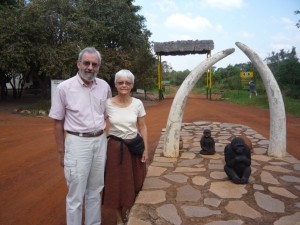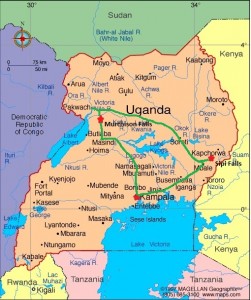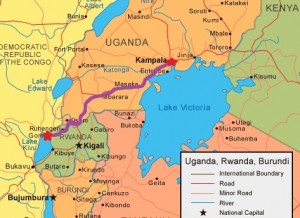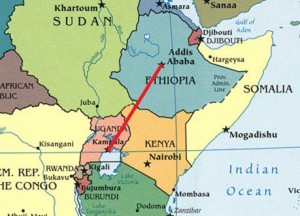What’s an “ordinary” day like for us? When we are in town, we never know for sure what the day will hold, but there are some common things that usually happen.
First of all there is the drive to the office—about 2-3 km (not quite 1 mile)—which can take 10-20 minutes, depending on the traffic. As we leave our house we often encounter cows or goats or chickens –and always bicycles and motorbikes (called boda boda) as well as cars. There is a view across the valley to the hill where the office is located. We pass many little shops along the way. There are three corners that are usually congested.
After we make our first turn we can see ahead—to the traffic and to the local market. We pass a “washing bay” along the way as well as a “hardware” shop. The market has busy vendors along the road getting ready for the day. More congestion and we are at the office.
Monday mornings we spend time in devotions and on catching up with each other’s activities. Our song this week was in Luo:
Ipoore me amara (x4) You are worthy to be loved
Ipoore me awora (x4) You are worthy to be praised
Ipoore Rwot Ipoore (x4) You are worthy
Obanga tima Kica (x4) Lord have mercy
We work at our computers much of the day—writing and responding to email, reading, responding to, and writing reports, entering data in the MCC database, working on financial items. We may have visitors and discuss MCC’s program and partner locations. We may work at organizing papers and boxes from the last 25 years. We may hear a band marching down the street or spend some time watching the new building going up across the street.
Uganda has rolling blackouts. Up until about 2 months ago, when power went off suddenly in the office, we would be caught with “unsaved” files on our computers. We recently purchased new inverter batteries that kick on when power goes off. It has been a big help.
Lunch is usually at a nearby spot. At the end of the day, we again face the traffic. We often go home a slightly different route, but the congestion is all the same! And Daisy is very happy when we arrive home!



























































































































































































































































































